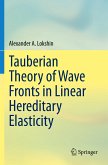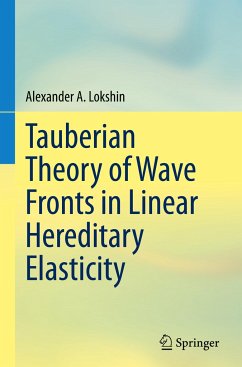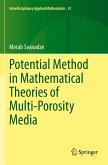This book is derived from notes used in teaching a first-year graduate-level course in elasticity in the Department of Mechanical Engineering at the University of Pittsburgh. This is a modern treatment of the linearized theory of elasticity, which is presented as a specialization of the general theory of continuum mechanics. It includes a comprehensive introduction to tensor analysis, a rigorous development of the governing field equations with an emphasis on recognizing the assumptions and approximations in herent in the linearized theory, specification of boundary conditions, and a survey of solution methods for important classes of problems. Two- and three-dimensional problems, torsion of noncircular cylinders, variational methods, and complex variable methods are covered. This book is intended as the text for a first-year graduate course in me chanical or civil engineering. Sufficient depth is provided such that the text can be used without a prerequisite course in continuum mechanics, and the material is presented in such a way as to prepare students for subsequent courses in nonlinear elasticity, inelasticity, and fracture mechanics. Alter natively, for a course that is preceded by a course in continuum mechanics, there is enough additional content for a full semester of linearized elasticity.
"There is a good balance between theory and practical applications...[the] approach acknowledges the basic concepts of continuum mechanics without burdening the presentation with excessive generalities. The assumptions required to obtain linear results from nonlinear results are clearly described. This enables students to clearly understand the limitations of linear results...the book includes a good range of discussion and examples...to motivate and complement the theory...[it] is written in a clear style...[and] can be recommended as a good example of a modern textbook in this field." -Applied Mechanics Review
"This very accessible book will be of interest in teaching or learning linear elasticity." -Zentralblatt Math
"The book presents classical parts of the linearized theory of elasticity in a selfcontained way that seems to be a fine compromise between the necessity of a deep mathematical insight and the accessibility of exposition. The author points out that the book is intended as a text for a first-year graduate course in mechanical or civil engineering. ...Many figures and solved examples contribute to the clarity of exposition. Moreover, each chapter finishes with a subsection of unresolved problems, hints being often given. The material in the book is well organized, presented in a lucid way, and can reach a fairly broad audience spanning from advanced undergraduate students to graduate students. Professionals and researchers may enjoy this book for its clarity and instructive examples, as well as a refreshing reminder of the classical results of the linearized theory of elasticity." -Applications of Mathematics
"This book is a modern treatment of the linearized theory of elasticity, presented as a specialization of the general theory of continuum mechanics. It is derived from notes used by the author in teaching a first-yeargraduate-level course in elasticity.... Presented [are] various results connected to functions of a complex variable, strain, plane strain/stress, etc.... Each chapter ends with a useful list of problems.
The book is clearly written, with rigorous presentation, in a pleasant and accessible style. This new text is an excellent resource devoted to introduce the students in mechanical or civil engineering to the linearized theory of elasticity. It is warmly recommended to all researchers in the field." -Revue D'Analyse Numérique et de Théorie de L'Approximation
"This very accessible book will be of interest in teaching or learning linear elasticity." -Zentralblatt Math
"The book presents classical parts of the linearized theory of elasticity in a selfcontained way that seems to be a fine compromise between the necessity of a deep mathematical insight and the accessibility of exposition. The author points out that the book is intended as a text for a first-year graduate course in mechanical or civil engineering. ...Many figures and solved examples contribute to the clarity of exposition. Moreover, each chapter finishes with a subsection of unresolved problems, hints being often given. The material in the book is well organized, presented in a lucid way, and can reach a fairly broad audience spanning from advanced undergraduate students to graduate students. Professionals and researchers may enjoy this book for its clarity and instructive examples, as well as a refreshing reminder of the classical results of the linearized theory of elasticity." -Applications of Mathematics
"This book is a modern treatment of the linearized theory of elasticity, presented as a specialization of the general theory of continuum mechanics. It is derived from notes used by the author in teaching a first-yeargraduate-level course in elasticity.... Presented [are] various results connected to functions of a complex variable, strain, plane strain/stress, etc.... Each chapter ends with a useful list of problems.
The book is clearly written, with rigorous presentation, in a pleasant and accessible style. This new text is an excellent resource devoted to introduce the students in mechanical or civil engineering to the linearized theory of elasticity. It is warmly recommended to all researchers in the field." -Revue D'Analyse Numérique et de Théorie de L'Approximation








